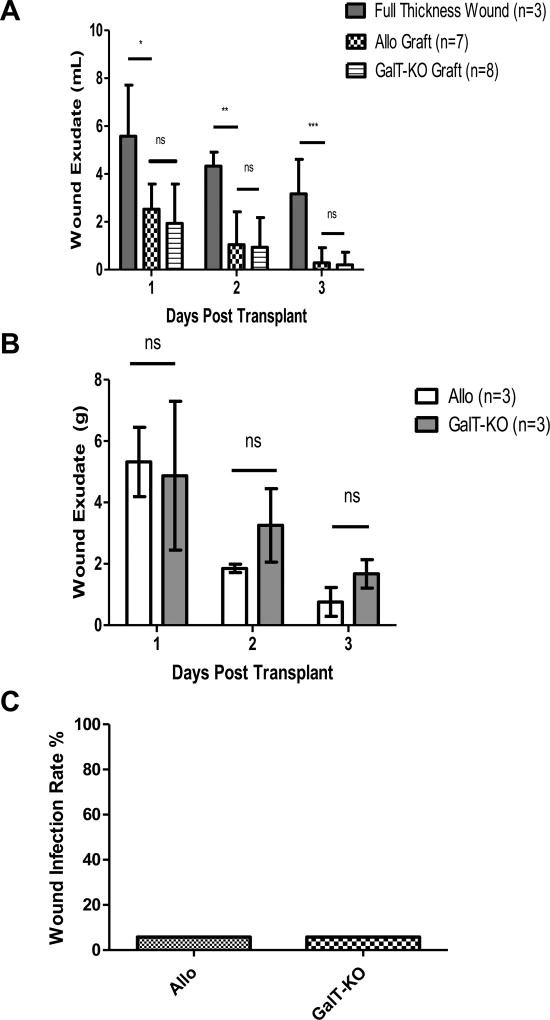Fig. 1.
Control of fluid loss from full thickness wounds by GalT-KO porcine split thickness grafts is equivalent to allogeneic skin grafts. (A) Wound exudates measured by volume (mL) eluted from absorbent dressings. GalT-KO skin and allogeneic skin grafts both significantly reduced fluid loss in comparison to untreated full-thickness wounds over first three days following grafting (*, Day 1 Full thickness wound vs. allo graft p=0.0132; vs. GalT-KO p=0.0137: **, Day 2 Full thickness wound vs. allo graft p=0.0046; vs. GalT-KO p=0.0016: ***, Day 3 Full thickness wound vs. allo graft p=0.0017; vs. GalT-KO p=0.0005). (B) Wound exudates assessed daily as delta wet-dry weight (grams) of absorbent dressing. Exudates fell to undetectable levels after day 3. No statistical significance was observed between allo and GalT-KO grafts at any point (Day 1: p=0.7865; Day 2: p=0.1144; Day 3: p=0.0746). (C) Percentage wound infection rates for allogeneic and GalT-KO xenogeneic skin grafts. Clinical signs of wound infection were observed in 5.8% (1/17) grafts in each group. Common skin commensal organisms were cultured, and neither animal developed signs of systemic illness.

